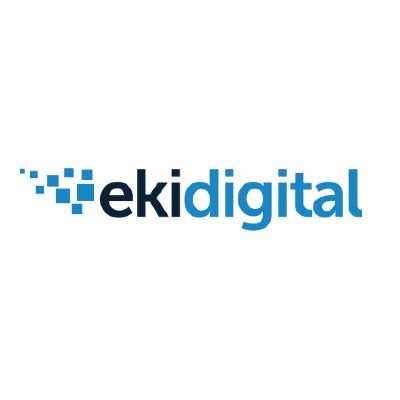Or listen in your favorite podcast app
Apple Podcasts / Google Podcasts / Spotify
There’s no bigger buzzword in technology than the term digital transformation. Stressed with the burden of fading legacy technologies, for years companies have viewed the process of upgrading their technology stack as a luxury rather than a necessity. Now, as more employees abide by work from home orders, that directive has shifted and those transformations are at the forefront of companies’ needs. Christopher Rigg is the COO of EKI Digital, a company with the mission of simplifying the daunting task of upgrading technology stacks through quantitative analysis.
On this episode of IT Visionaries, Christopher discusses the growing need for putting the employee experience first, the war to accumulate and retain talent and why low-code offerings are helping organizations around the world operate efficiently.
Main Takeaways
- Analysis by Paralysis: By taking a quantitative approach when looking at your tech stack, you can have a better understanding of the steps you need to take in order to successfully manage your digital transformation. Look past your legacy technologies and focus on the hard numbers so you can tell where you can spend money, what software you can eliminate, and focus on the areas of need.
- Retain Talent: In order to retain talent, you must deploy an employee experience that is seamless and efficient, but also one that is appealing. Focus on software that enables your employees to do their job where they are, and focus on the pieces of technology that make working remotely more appealing.
- No-Code, Low-Code: Low-code offerings are enabling organizations to operate at a much more efficient level. While engineering is a competitive field, by offering low-code opportunities, organizations can operate at a more efficient pace while deploying coders who might not be as skilled but have a better understanding of the organization
—–
For a more in-depth look at this episode, check out the article below.
There’s no bigger buzzword in technology than the term digital transformation. Stressed with the burden of fading legacy technologies, for years companies have viewed the process of upgrading their technology stack as a luxury rather than a necessity. Now, as more employees abide by work from home orders that directive has shifted and those transformations are at the forefront of companies’ needs. Christopher Rigg is the Managing Principal and COO of EKI Digital, a company whose mission is to simplify the daunting task of upgrading that technology stack through quantitative analysis.
On this episode of IT Visionaries, Christopher discusses the growing need for putting the employee experience first, the war to accumulate and retain talent and why low-code offerings are helping organizations around the world operate efficiently.
EKI Digital is an IT consulting firm that enables organizations to identify and execute better IT decisions. One of the key ways EKI Digital helps companies drive better decisions is through quantitative techniques.
“Organizations, when they say they’re data-driven, they often mean that they’re using customer data or experience data to make decisions,” Rigg said. “In terms of how do I drive a better experience for the client? How do I use this data more effectively? When you’re thinking about making an investment in your digital platform, you have to use hard numbers to decide how much to spend, what is the expectation in return, and when am I going to get a return? Oftentimes clients make investments in digital because they feel like it’s something they have to do, but they aren’t really doing it in a way that is truly quantitative in their analysis.”
When making quantitative decisions, Rigg said they try to be as open and transparent as possible, including serving as an unbiased third-party when it comes to assessing a company’s technology stack.
“When you’re making investments in digital technology, there’s a certain amount of uncertainty and a rapid pace of development,” he said. “Part of what we like to do is make sure that companies are looking past investments so that you’re not redundant investing or over-investing in legacy technology so that you can free up more capital to invest in newer technologies.”
By approaching digital transformations through quantitative analysis, Rigg said it allows organizations to have a better overall view of where their budget stands, where they can effectively reduce costs, what aging technologies they can eliminate, and where they have money to make new investments that can produce a better return.
“We get a fair amount of skepticism for approaching digital transformations this way and I would say that skepticism is healthy because they understand the challenge of trying to consolidate, rationalize, and use more lean principles,” Rigg said. “The CFO, CEO, they understand it, they get it. They’re often frustrated by the technology partners because they view them as expenses that aren’t necessarily producing the result that they want. So a big part of what we try to do is we have to win those folks over by not only showing them that our analysis is good, that the opportunities are indeed coming out of our models, but that we have strategies and techniques that can help them actually achieve those goals.”
Rigg mentioned that one thing work-from-home orders have done is force organizations to accelerate their digital timelines, forcing them to invest in capabilities and techniques that they would have viewed as a luxury before.
One of the ways that companies have accelerated those timelines is through the use of low-code offerings. Low-code is a development platform software that affords developers the opportunity to create application software through user interfaces as opposed to traditional handed-coded computer programming.
Rigg remembers growing up as a programmer using application development tools such as power builder and Lotus Notes. Some of the annoyances of those applications were developers and users would often run into performance issues, which would cause developers to break out the framework that would require updating the code, which is a process that is very difficult to maintain.
“People used to not believe that the low-code environment could get them all the way through to the end while delivering an application that had a good quality interface and was easy to use,” he said. “From a development perspective, these tools have gotten a lot better.”
Rigg mentioned that another trend he is seeing is businesses demanding digital capabilities at a pace that is very difficult for technology to keep up with, which is causing the CIO or CTO to address their backlog of aging technologies. Low-code affords them the ability to streamline that approach.
Lastly, Rigg addressed another area low-code technology is helping organizations: obtaining and retaining their talent base. Because low-code technology does not require top-tier talent, low-code is allowing organizations the opportunity to hire people that not only understand how to manage the software, but also the business side.
“You still need to be a good programmer,” Rigg said. “But now at least to have a good understanding of application development and the core principles, you don’t have to be that kind of Google-level engineer to write a good application.”
To hear more from this conversation, and about how low-code offerings are helping companies through their digital transformations, check out the full episode of IT Visionaries below.
—
To hear the entire discussion, tune into IT Visionaries here.




